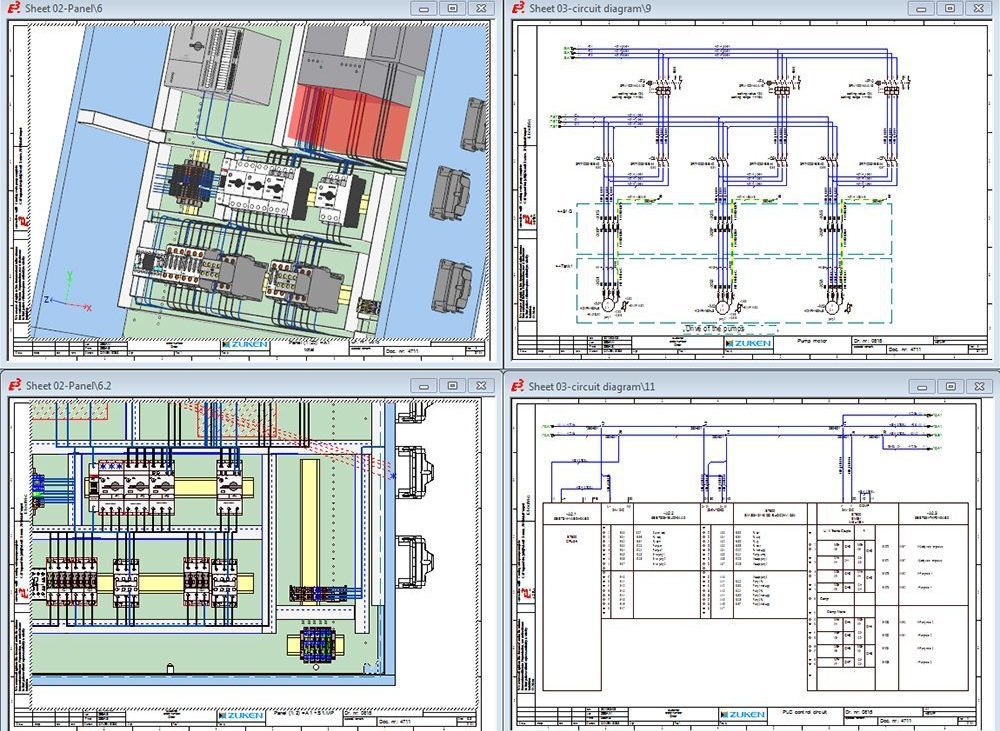Optimizing Industrial Electrical Design for High-Demand Operations
Optimizing Industrial Electrical Design for High-Demand Operations
Blog Article
Cutting-edge Electrical Design Providers for Modern Facilities
As metropolitan atmospheres expand significantly complex, integrating technologies such as wise grids and eco-friendly energy resources becomes vital. These advancements not only promise to optimize energy intake but also foster durability against future needs.
Importance of Cutting-edge Electrical Design
Ingenious electric design plays a critical role in modern-day facilities, affecting not only effectiveness however also sustainability. As cities progress and the need for power rises, the need for sophisticated electric systems comes to be vital. These systems need to not only satisfy present demands but also anticipate future development and technological innovations.
A well-executed electric design can dramatically lower energy intake, consequently reducing operational costs and reducing ecological effect. By integrating eco-friendly power resources, such as photovoltaic panels and wind turbines, cutting-edge designs can enhance power self-reliance and strength. Wise grid technologies permit for real-time tracking and monitoring of energy circulation, enhancing performance and decreasing waste.
Safety and security is another essential element of electric design. Applying sophisticated modern technologies and extensive criteria can reduce threats linked with electric failures, ensuring a safe setting for locals and organizations alike. Additionally, ingenious layouts help with flexibility, permitting infrastructures to integrate emerging modern technologies seamlessly.
Secret Trends in Electric Design
As the landscape of electrical design continues to advance, a number of vital trends are forming the future of the industry. One significant pattern is the integration of wise technology right into electrical systems. The proliferation of the Web of Points (IoT) has actually allowed real-time monitoring and control of electrical tools, enhancing efficiency and facilitating predictive maintenance.
One more trend is the expanding focus on modular design. This technique permits scalable and flexible services, allowing framework to adapt to changing requirements without comprehensive renovations. Additionally, the use of advanced simulation devices and Building Information Modeling (BIM) is coming to be progressively common, streamlining the design procedure and boosting partnership amongst stakeholders.
Additionally, improvements in materials scientific research are resulting in the development of lighter, more long lasting, and energy-efficient components. This technology is particularly important for high-performance structures and infrastructure projects.
Last but not least, there is a significant change towards data-driven decision-making - electrical engineering design services. Leveraging information analytics assists developers maximize systems for efficiency and cost-effectiveness. Together, these fads indicate a transformative era in electric design, improving capability, sustainability, and strength in modern-day framework
Sustainable Power Solutions
Sustainable power remedies are increasingly coming to be a vital focus in electrical design, mirroring a broader dedication to ecological responsibility and source efficiency. These solutions aim to lessen ecological effect while optimizing energy usage in various infrastructures, from property buildings to huge business centers.
One of the primary strategies includes the integration of renewable resource resources, such as solar panels and wind generators, right into electrical systems. This not only lowers reliance on nonrenewable anchor fuel sources yet additionally enhances energy resilience. Furthermore, cutting-edge energy storage space systems, such as sophisticated batteries, make it possible for efficient management and circulation of power, guaranteeing that excess power produced throughout top manufacturing can be utilized throughout high demand periods.
Additionally, energy-efficient design practices are being adopted to improve overall system efficiency. This includes utilizing energy-efficient illumination, heating and cooling systems, and smart building innovations that adapt and check energy usage based upon tenancy and ecological problems.
Smart Grid Technologies
The execution of lasting power options normally brings about the expedition of smart grid technologies, which play a pivotal function in modernizing electric systems. Smart grids leverage progressed interaction technologies and information analytics to enhance the dependability, effectiveness, and sustainability of electrical energy circulation. By integrating digital innovation with typical grid facilities, these systems assist in read real-time tracking, automated control, and boosted decision-making capacities.
One of the key functions of wise grids is their ability to fit sustainable energy resources, such as solar and wind power. This flexibility not only lowers dependence on nonrenewable fuel sources yet also permits a much more decentralized energy production model. Furthermore, wise grids enable need action programs, where customers can readjust their power use based upon real-time rates, therefore advertising energy preservation and reducing peak load needs.
In addition, clever grid innovations improve grid durability by enabling quicker identification and resolution of interruptions, ultimately decreasing downtime. With predictive maintenance and analytics, utilities can boost and maximize operations solution delivery. As areas and cities continue to evolve, wise grid technologies are important for developing a sustainable and effective electrical infrastructure that satisfies the demands of modern culture.

Future-Proofing Framework
To guarantee lasting practicality and versatility, future-proofing infrastructure is crucial in the quickly advancing landscape of electrical design solutions. As modern technology breakthroughs and energy needs shift, it is crucial that electric systems are made with versatility in mind. This requires integrating scalable options that can fit future upgrades without necessitating substantial overhauls.

Additionally, sustainability should be a keystone of future-proofed layouts. Making use of renewable resource resources, such as solar and wind, and optimizing energy effectiveness decrease reliance on nonrenewable fuel sources, straightening with international initiatives to combat climate change.
Conclusion
By focusing on versatility, performance, and sustainability, these solutions attend to the developing demands of power systems. The combination of smart grid technologies and sustainable power services enhances strength and minimizes functional prices.
A well-executed electric design can dramatically decrease power consumption, therefore reducing operational expenses and decreasing environmental influence. By integrating sustainable energy sources, such as solar panels and wind generators, ingenious layouts can boost energy freedom and durability. Furthermore, cutting-edge power storage space systems, such as advanced batteries, make it possible for efficient monitoring and circulation of power, making sure that excess power generated during peak manufacturing can be utilized during high demand periods.
Wise grids allow demand feedback programs, where consumers can readjust their energy usage based on real-time rates, thus advertising energy conservation and lowering peak tons demands. (residential electrical design)
As innovation breakthroughs and energy demands change, it is important that electric systems are developed with adaptability in mind.
Report this page